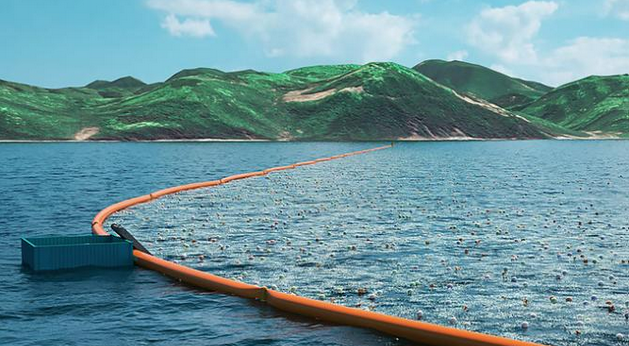
The oceans have a plastic debris problem, and it’s growing by 8 million tons a year. Three years ago, a Dutch teenager named Boyan Slat found a solution he invented for a high school science fair: a passive ocean trash collection device that would collect ocean plastic without harming marine life.
These days, Slat is eager to put his massive ocean-cleaning idea to the test. A passing grade might lead to the removal of nearly half of the plastic debris floating in the Pacific Ocean. But the process needs to be tested in real-world conditions before it can be launched at full scale—or beat the criticism of scientists who are wondering that it can work.
Slat’s idea doesn’t follow marine cleanup methods. Instead of sending ships out to chase floating garbage, position a stationary, floating, V-shaped buffer in ocean currents so that water moves through it, funneling plastic debris into a container for capture and removal while allowing animals to swim past the net-free device.
To test the concept, Slat and his company, Ocean Cleanup, propose to place a 6,561-foot-long float in the Korea Strait, by spring 2016. If realized, it would be the largest floating structure ever used. If the technology works, Ocean Cleanup hopes to build a 62-mile-long system that would float somewhere between Hawaii and California. This one would be big enough to deal with millions of tons of plastic trash.
When it first conquered the Internet in 2013, Slat’s plan captured hearts around the world for its combination of boldness and simplicity. But the scientific community doubts whether it would work, how effective it would be, and its potential environmental impacts. Slat and the 100-member staff of his company, Ocean Cleanup, answered last year with a 530-page report stating that a 62-mile-long model would remove 42 percent of the plastics in the Pacific Ocean.
本时文内容由奇速英语国际教育研究院原创编写,禁止复制和任何商业用途,版权所有,侵权必究!
1.Ocean Cleanup was invented in order to _____.
A remove the plastic trash
B protect marine life
C test his new idea
D make much money
解析:选A。A。细节理解题。根据第一段第二句的...that would collect ocean plastic without...可以得知发明此物的目的是为了能去掉海上的塑料垃圾。
2.How will Slat stop people from doubting the Ocean Cleanup?
A He will launch at a full scale.
B He will have it tested on the sea.
C He will clean the sea by hand.
D He will try to inquire scientists.
解析:选B。B。细节理解题。根据第二段第一句的These days, Slat is eager to put his massive ocean-cleaning idea to the test可知他要通过在海上进行实验来打消科学家的疑虑。
3.What is the advantage of Slat’s idea?
A It sends the ships to collect the garbage.
B It invites the animals to pass the nets.
C It traps plastic debris by running water.
D It uses the funnels to contain the fish.
解析:选C。C。推理判断题。根据第三段第二句的...water moves through it, funneling plastic debris into a container for capture and removal...可知其工作原理是,流水通过该设备的时候把垃圾漏进了一个容器。
4.Where did Slat and his company test his invention?
A In the Korea Strait
B In Hawaii.
C In California.
D In the Atlantic Ocean.
解析:选A。A。细节理解题。根据第四段第一句的To test the concept, Slat and his company, Ocean Cleanup, propose to place a 6,561-foot-long float in the Korea Strait...可知他和他的公司是在朝鲜海峡进行实验的。
5.What is the attitude of people from the Internet towards the Ocean Cleanup?
A Doubtful.
B Supportive.
C Indifferent.
D Objective.
解析:选B。B。推理判断题。根据文章最后一段第一句的When it first conquered the Internet in 2013, Slat’s plan captured hearts around the world...可以得知他的设计赢得了网民的心,因此他的设计得到了他们的支持。